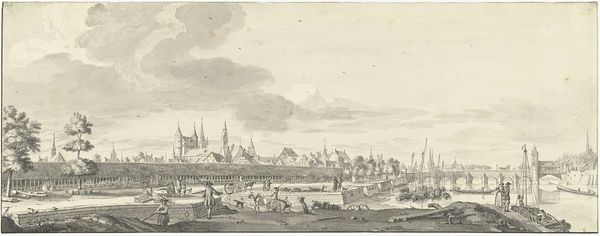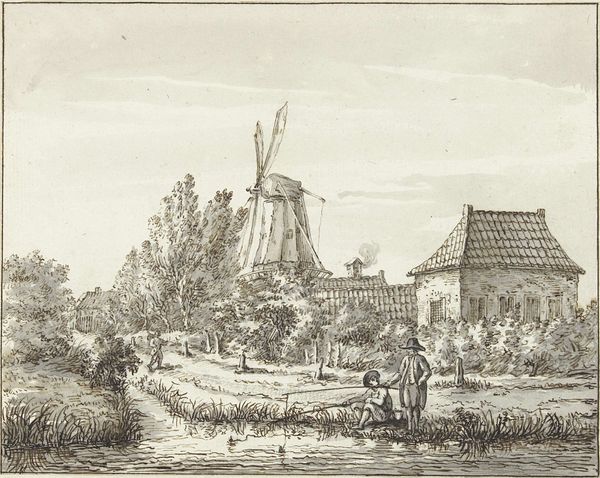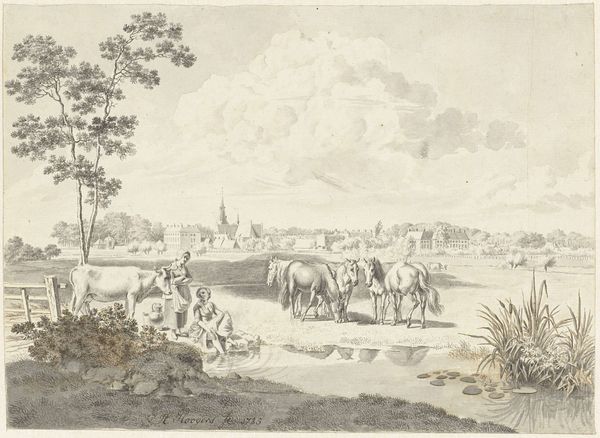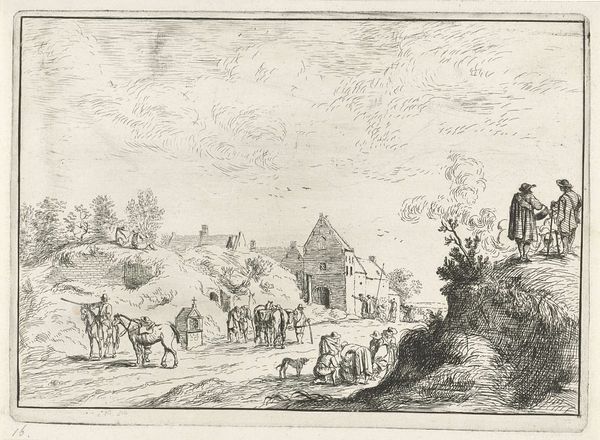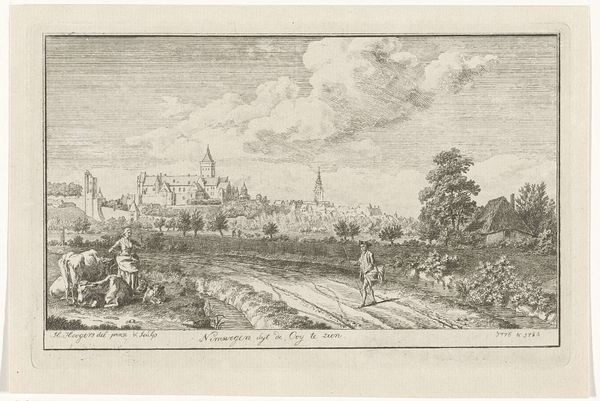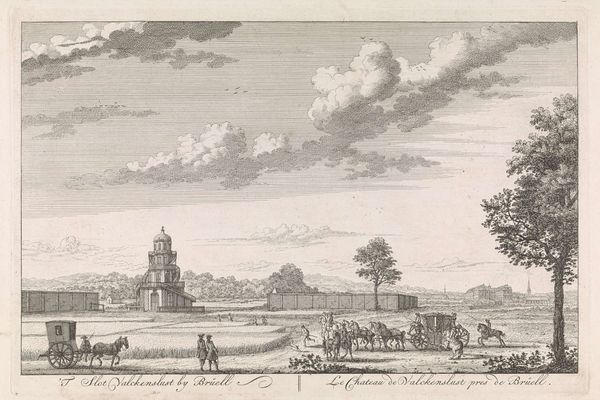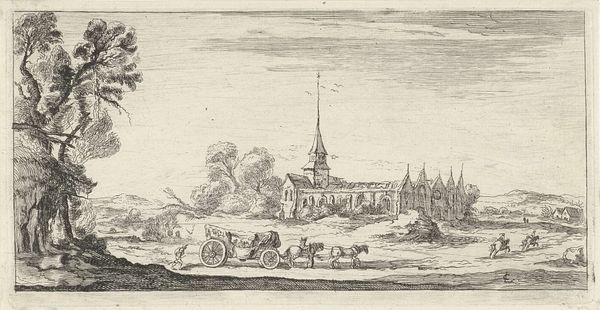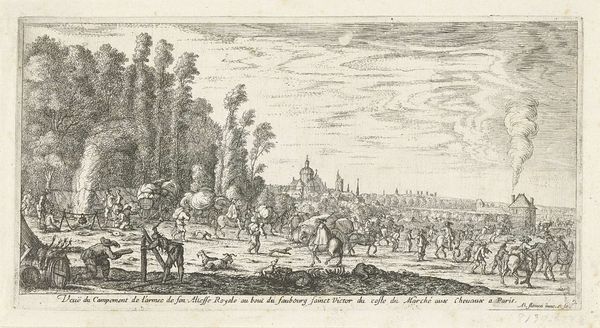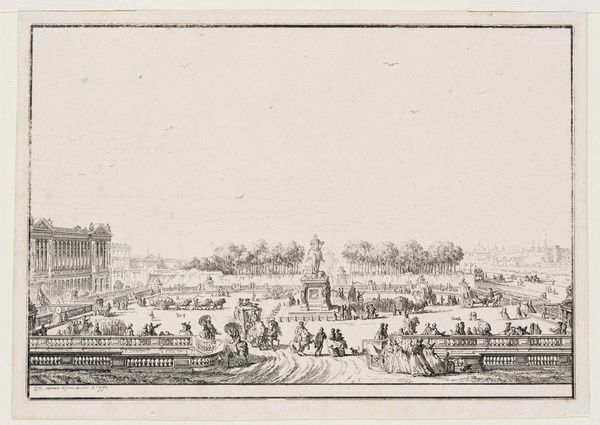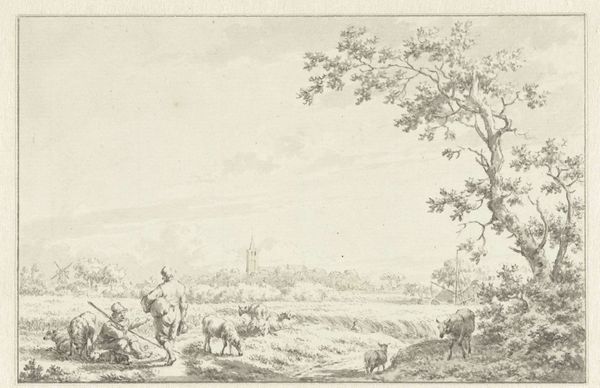
drawing, etching, paper, ink
#
drawing
#
etching
#
landscape
#
paper
#
ink
#
cityscape
Dimensions: height 160 mm, width 340 mm
Copyright: Rijks Museum: Open Domain
Curator: Immediately, I am struck by the quiet industry captured in this monochromatic vista, evoking a pastoral charm blended with civic pride. Editor: And what a blending of worlds! We're looking at Hendrik Spilman's "View of Haarlem from the Northwest", created between 1733 and 1784. The work combines drawing and etching techniques on paper, using ink to depict the city. Curator: The windmills dominate the foreground, symbols of Dutch ingenuity and self-reliance, don't you think? Editor: Absolutely. The windmills speak of harnessing nature's power. But I'm drawn to the kite in the sky – a fleeting moment of childhood innocence juxtaposed against the enduring symbols of the city. In essence, a visual representation of "tempus fugit," perhaps? Curator: It’s an interesting counterpoint, for sure. The cityscape isn’t just buildings; it is also an arena for the lives unfolding, for the future being built, and a visual reminder of what is at stake. And let's not overlook the placement of the livestock. These visual details act to communicate Haarlem's economic prowess, linking rural industry with the prosperity of the urban center. Editor: Good point about the cattle, but do you think Spilman chose to elevate certain architectural details for symbolic weight? Note how the church spire pierces the skyline, as it silently oversees the industrious landscape and seems like a symbol of order and spiritual oversight. Curator: Spilman likely aimed to visually represent Haarlem’s significance within the broader Dutch context and culture of the period. This artwork underscores the notion of urban landscapes and cityscapes serving as emblems of cultural identity and civic advancement, which often involved idealized portrayals or strategically composed scenes designed to resonate with viewers and reflect favorably upon the city. Editor: Fascinating to view the dual importance of the imagery in the city, from representations of economic prosperity to allusions to traditional ideas of home and the domestic, still carrying importance and cultural meaning today.
Comments
No comments
Be the first to comment and join the conversation on the ultimate creative platform.
